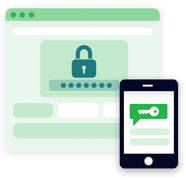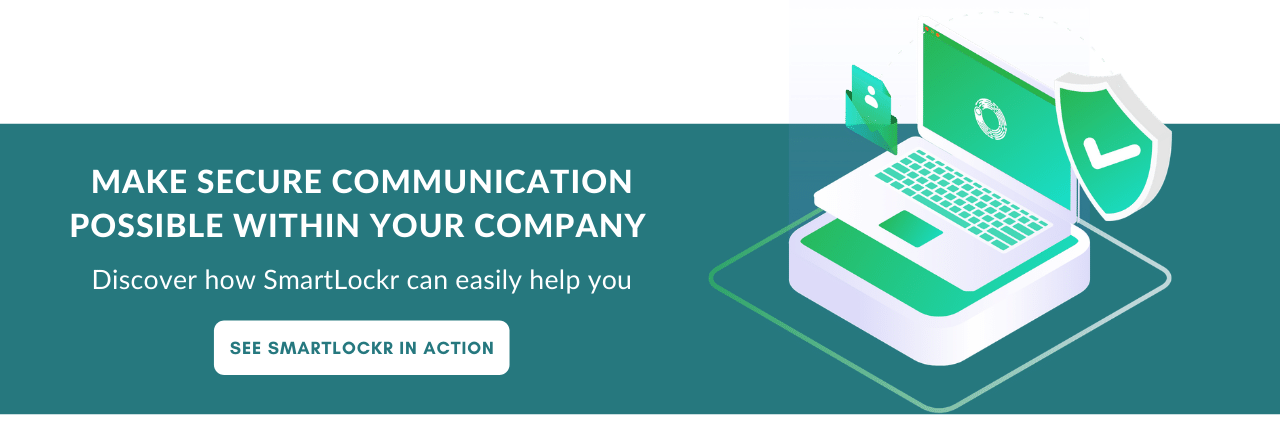To keep you informed of all developments, we share a new or updated feature every Friday in our "Feature Friday". Today: one-factor and two-factor authentication . Doesn't a bell ring immediately? No problem, we are happy to explain what this is and how it is used.
What are one-factor and two-factor authentication?
What is one-factor authentication?
Nowadays we all have a few: online accounts with which we use various services. Think of social media channels such as Facebook and LinkedIn or online web shops such as Zalando or Amazon. These accounts are usually protected with a username and password. . The username is not necessarily private, but the password is. This is a factor that is only known to you. In this case, the password is the only security factor that gives access to the account: we therefore speak of one-factor authentication. The combination of a given and one personal factor then grants access.
What is two-factor authentication
But, in some cases it is desirable to have just a safer option. Think of logging in at a government institution, such as the Tax Authorities. Or a more famous example: withdraw money at a payment machine. Two personal factors are needed for this: a bank card that only you own and the corresponding pin code, which only you know. The use of two factors to gain access is what we call two-factor authentication.
A password and a personal pin code are not the only factors that can be used. We can think of a fingerprint, iris scan, verification of an e-mail address or verification by telephone. With the last option, an extra code is sent to a mobile number. Just like the bank card, a mobile number is personal. This reduces the chance that others can easily enter your account.
Suitable security with Smartlockr
With Smartlockr, files and messages are sent and received in a secure manner. We offer both one-factor and two-factor authentication. This means that:
one-factor authentication with Smartlockr
- With one-factor authentication, a password is sent by e-mail to the recipient. If this e-mail address is correct, the recipient can use the sent password to access the messages. This is a secure solution, but of course, it depends on the chosen password of, in this case, your e-mail.
Tip: do not try to use the same password everywhere. Although this is understandable, it can be annoying if it gives unauthorized access to multiple of your accounts.
Read More: How strong passwords will keep your data secure
Two-factor authentication with Smartlockr
- Two-factor authentication is a stronger security option because both the e-mail address and the telephone number are verified. Not only does the recipient receive an e-mail, but also an access code that is sent by SMS. The combination of two factors, therefore, makes it more difficult for unauthorized persons to access the files. Malicious people must have both your login details and your smartphone for this.
Would you like to be sure that only the correct recipient has access to the attachments? Have them authenticate via SMS.
With the introduction of the GDPR, extra security measures for personal data have become the new standard. You want to send your e-mail so that it is not only encrypted but so that it can only be opened by the intended recipient. Via Two Factor Authentication (2FA) or SMS Authentication you can protect your e-mail by sending the recipient an SMS with a one-time login code or password. This way you can be sure that only the authorised recipient gains access to the email.
What does secure email mean? How can you make your email more secure? Find out more in our Secure Email page.

- Only the authenticated recipient has access to the sent messages and / or files. Even if you send this protected data to a wrong person , he cannot view the data. Without the correct access codes, no access!
Send files using extra security. The user needs to authenticate before gaining access to the files.
The standard protection allows you to e-mail files securely. If, however, you would like some additional protection, then it is possible to encrypt the files with a password. The recipient is sent the password separately either via e-mail, telephone, SMS or WhatsApp, and afterwards gains access to the files. This way the files are only accessible to the individual who has personally received the password.
In version 4 we offer users the choice to determine themselves with which security the files should be sent. Both security options ensure that you can share files securely. But leaving the user's choice makes the use of Smartlockr more user-friendly.

.webp)